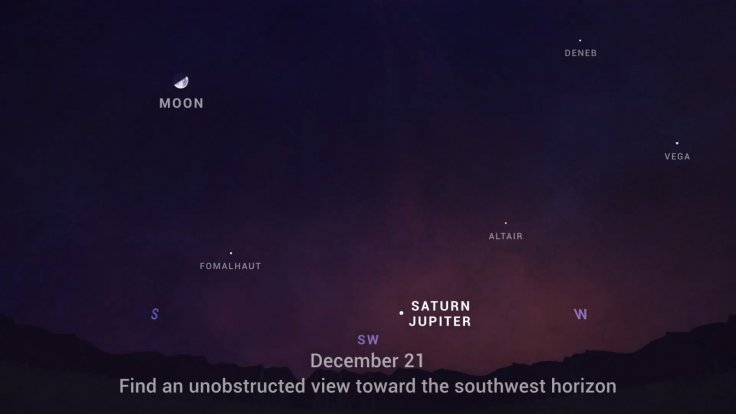If you look up at the sky on December 21, you may see something amazing—a gigantic shining star. It happens when the two largest planets in the solar system, Jupiter and Saturn, come so close to each other that they may appear to be overlapping, creating a kind of "double planet".
Both the planets have been traveling across the sky together all year, but in December they get ready to put on a show. The phenomenon involving Jupiter and Saturn is called as "great conjunction". The last time it happened was in 1823 but the rare phenomenon could not be seen from Earth. This year's celestial event has been christened by some experts as the "Christmas Star", because of its proximity to Christmas Day.
Michael Brown, an astronomer at Monash University in Australia, said: "You can actually see it with your own eye. It doesn't have to be measured with sophisticated instruments. The two objects are appearing very close in the sky, but ultimately they're very far away from each other"—450 million miles apart.

Rare Moment
The alignment between Jupiter and Saturn is rather rare, as it happens once in every 20 years. But according to Patrick Hartigan, a professor of physics and astronomy at Rice University, "the conjunction is exceptionally rare because of how close the planets will appear to one another".
On the evening of closest approach on December 21 the planets will look like a double planet, "separated by only 1/5th the diameter of the full moon," he said. For the telescope viewers, the planets and their largest moons will be visible in the same field of view that evening, said Hartigan.
"Look for them low in the southwest in the hour after sunset," suggested NASA, adding that on December 21, both the planets will appear "just a tenth of a degree apart – that's about the thickness of a dime held at arm's length!" Nahum Arav, a professor of physics at Virginia Tech, described the "rare event" as a special incident because of "how bright the planets will be and how close they get to each other in the sky".
The last time, the world could not witness this rare astronomical moment, but luckily the rare phenomenon will be visible from Earth on December 21 this year. According to projections from Hartigan, the next conjunction would be visible in 2080.









